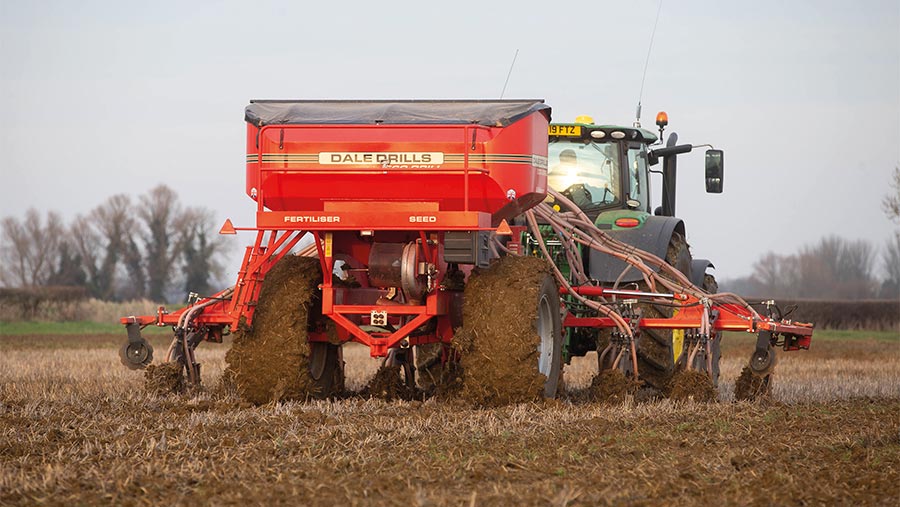Four wheat varieties with wide drilling windows to consider
 © Tim Scrivener
© Tim Scrivener The value of wheat varieties with wider drilling windows that allow for later sowing has proved incredibly useful after the wet winter of 2019, offering growers greater flexibility on when crops can be planted.
Opting for a cultivar with a more adaptable drill date could help growers manage risk, should conditions delay drilling again next season.
See also: Guide to which OSR varieties to drill in summer 2020
Cereal variety specialist Clare Leaman, who works at variety specialist Niab, picks out her top four wheat variety recommendations with wide drilling dates, which growers should consider as part of their 2020-21 mix along with Skyfall.
1. Gleam
Mrs Leaman’s first pick is Syngenta’s hard Group 4 feed wheat, Gleam, which is high-yielding (103%) and has a good overall profile for agronomics, disease resistance and grain quality.
The variety performs well in all regions and rotational positions, and has a latest safe sowing date of mid-February.
“Gleam really does tick all the boxes. Trial data is available for both early and late drilling, where the variety always performs at the top. It is extremely adaptable, with a wide and flexible drilling window, making it suited to more varied weather conditions,” she says.
2. Firefly
Firefly is the UK’s highest-yielding Group 3 variety, offering a good disease package, including a Septoria tritici rating of 7 and excellent lodging resistance.
The variety can be successfully drilled all the way up to the end of February and performs consistently across light and heavy soils. It is suited to all regions, but performs best in the main wheat-production areas of England.
However, Mrs Leaman is concerned about the variety’s susceptibility to yellow rust this season, which does not usually cause an issue.
“There is a slight caveat with Firefly in regards to disease susceptibility, but researchers are investigating this so that growers’ concerns over the variety can be answered,” she adds.
3. Extase
Mrs Leaman also recommends Extase, which boasts the best untreated yield (95%) of any variety on the Recommended List, with a strong disease-resistance package and regional performance.
“This variety cannot be ignored. It has a January drilling cut-off date and really good disease resistance. Later-drilling trial data is available this year that has shown exceptional performance, whereas data on earlier drill timings is limited,” she says.
4. Saki (new)
Her final recommendation is the new Group 4 variety Saki, which is very suitable for late sowing, up until January. It exhibits outstanding disease resistance (6.8 for septoria, 9 for yellow rust and 8 for brown rust) and has good straw strength.
“Again, with this variety there is not much information on early-sown drill timings, but during the normal drilling it yields well,” she says.

Saki wheat
Drill date flexibility
Clare Leaman highlights that the majority of the top winter wheat varieties have a good degree of flexibility when it comes to drill dates, which can help manage risk next season.
She adds that growers should not base next year’s choices solely on the extreme weather from this season.
“Growers were pushed to drill really late, which is not always the case. They should, therefore, be cautious when judging variety performance and basing decisions for next year on what happened last year,” she says.
She advises growers to not compromise standard variety choices without ensuring all boxes are ticked, as keeping options open and having a range of varieties is key.
Mrs Leaman points out that if this season has taught farmers anything, it’s that drilling conditions and seed-bed quality is of far greater importance than calendar dates and this should be prioritised.
“Growers can only do the best that they can and this season has been extreme in so many ways, we can just hope that next year will be not as bad,” she concludes.

